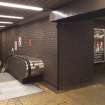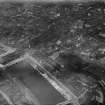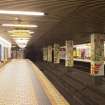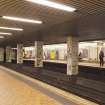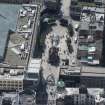Glasgow, St Enoch Square, St Enoch Subway Station
Railway Station (19th Century)
Site Name Glasgow, St Enoch Square, St Enoch Subway Station
Classification Railway Station (19th Century)
Alternative Name(s) Travel Centre; St Enoch Underground Railway Station; Glasgow Subway System; 'clockwork Orange'
Canmore ID 130846
Site Number NS56NE 231
NGR NS 58937 65004
Datum OSGB36 - NGR
Permalink http://canmore.org.uk/site/130846
- Council Glasgow, City Of
- Parish Glasgow (City Of Glasgow)
- Former Region Strathclyde
- Former District City Of Glasgow
- Former County Lanarkshire
NS56NE 231 58937 65004
For adjacent (main line) terminal station of St Enoch, see NS56SE 69.
For general account of the Glasgow Subway system, see NS56NE 4915.
St Enoch Underground Station (Glasgow Corp) [NAT]
OS 1:1200 map, 1967.
(Location cited as NS 599 650). St Enoch Underground Station, St Enoch Square, built 1895 for the Glasgow District Subway Co. A two-storey, 3- by 3-bay red-sandstone building in Jacobean style, designed by James Miller as the headquarters of the company.
J R Hume 1976.
St Enoch Underground Station (now Travel Centre), St Enoch Square.
E Williamson, A Riches and M Higgs 1990.
St Enoch Station (Glasgow Subway). This station was opened by the Glasgow District Subway on 14 December 1896, but closed the same day (with the remainder of the system); it was reopened on 21 January 1897. Together with the remainder of the system, the station was closed for refurbishment by the Greater Glasgow Passenger Transport Executive on 21 May 1977; it reopened on 16 April 1980, and remains in regular use by passenger traffic.
The bulding was also built as the headquarters and administrative offices of the Glasgow District Subway.
Information from RCAHMS (RJCM), 14 February 2006.
R V J Butt 1995.
NS56NE 231 58937 65004
ARCHITECT: James Millar, 1895.
German Renaissance of the early 17th century period in Locherbriggs sandstone.
Prospect 1979
























































